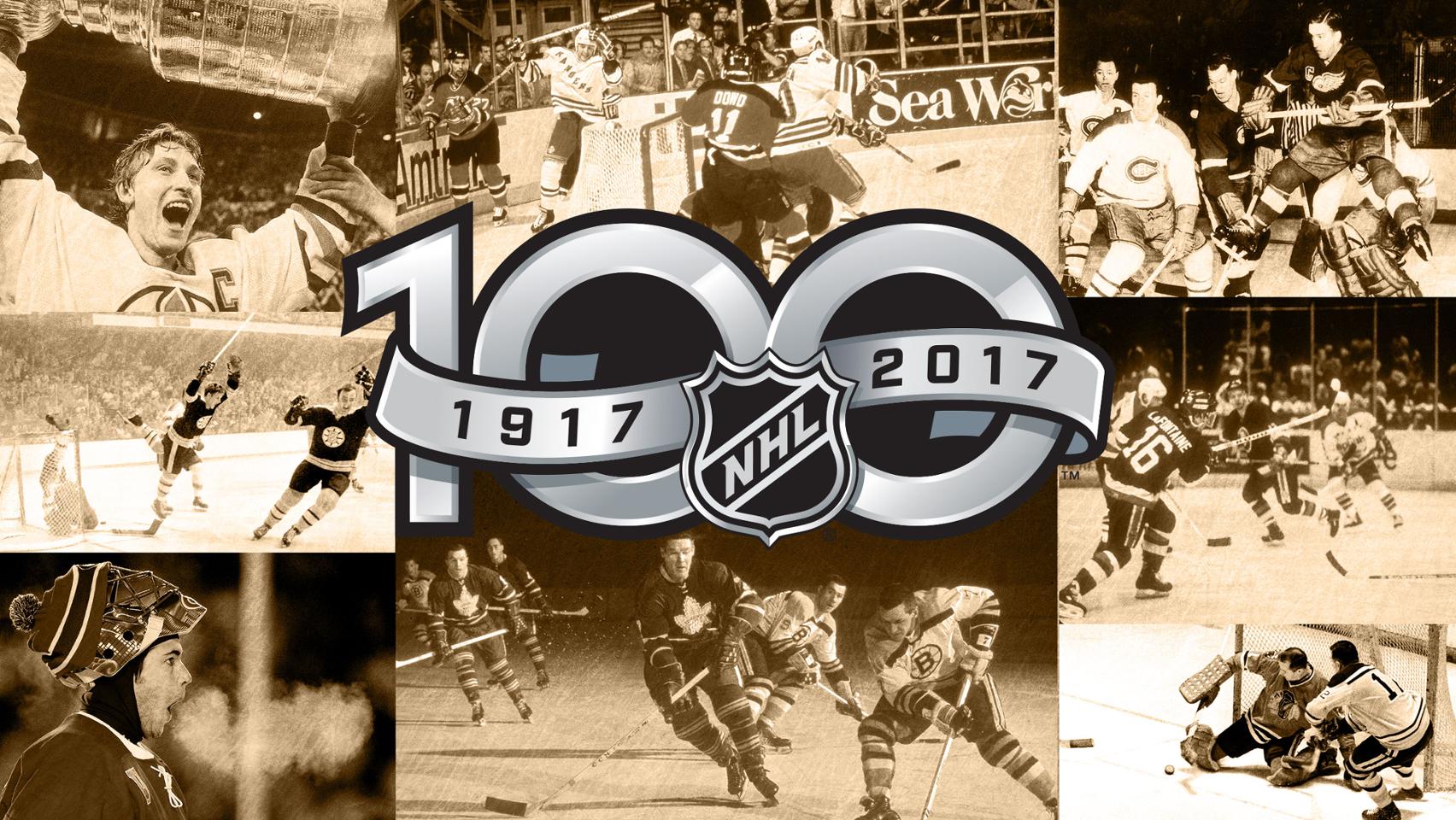By Stu Hackel / Special to NHL.com–
You couldn’t call the New York Rangers of the 1950s and early ’60s an elite hockey club, but they had a few elite players. One was extra special, regularly mentioned alongside Gordie Howe, Maurice Richard, Doug Harvey and Jean Beliveau, the NHL’s superstars of the day. On top of his exceptional talent, he was a tough but clean player, a modest man of great integrity, a leader and something of a matinee idol.
That man was Andy Bathgate.
Those qualities alone should have created a lasting reputation. But Bathgate’s renown has not resonated as loudly through the years compared to that of those other greats, whose teams often contended for or won the Stanley Cup. Yet when his career ended in 1971, Bathgate ranked among the all-time scoring leaders in the NHL. For eight consecutive seasons he finished among the League’s top four scorers, and in a ninth season he was fifth.
When Bathgate is remembered today, however, it is more because his backhand shot in 1959 sliced open Jacques Plante’s face, leading the Montreal Canadiens goaltender to become the first NHL goalie in history to wear a mask on a regular basis.
Ten months before the Plante episode, Sports Illustrated put the 26-year-old Bathgate on the cover and called him hockey’s “most exciting player.”
Sports Illustrated’s Kenneth Rudeen wrote, “Already conceded to be the finest player to put on the red, white and blue uniform of the New York Rangers since the heyday of the great prewar wing Bad Bill Cook, Bathgate was making the best start of his short but dazzling career. He shot magnificently, skated with the puck so well that he stirred old-timers to memories of the great stick-handlers of bygone days and passed the puck with uncanny timing and aim.”
He would capture the Hart Trophy that season, scoring 40 goals (the first Ranger to do so) and adding 48 assists. Bathgate had received serious Hart consideration in the two previous seasons as well. But what made his ’59 selection striking was the Rangers — who had made the Stanley Cup Playoffs in the three prior seasons and finally looked like a Cup contender for a good chunk of the season — blew a nine-point lead with two weeks remaining and missed the postseason when they lost their final game. But that didn’t prevent the voters from naming Bathgate the NHL’s most valuable player by a substantial margin over Howe.
The Rangers’ mid-1950s rise followed a dark period in which they missed the playoffs 11 out of 13 seasons, coinciding with Bathgate’s own rise. At 22 in 1954-55, his first full NHL season, he scored 20 goals, and he got 19 the next season with 47 assists, second most in the League. That was the first of seven straight seasons in which Bathgate led the Rangers in scoring.
The Rangers ended a six-year playoff drought in 1955-56 but lost a five-game series to the Canadiens. They would lose all four playoff series during Bathgate’s years with the Rangers, in part because they rarely played a postseason home game in that era. Madison Square Garden regularly booked the circus around Easter break to attract New York schoolchildren, often forcing the Rangers to play their Stanley Cup Playoff games elsewhere.
It wasn’t the only obstacle Bathgate faced in his years with the Rangers.
“I never once practiced on Madison Square Garden ice in 10 years,” he said on the TV series “Pioneers of Hockey,” citing the arena’s busy schedule.
Instead, the Rangers regularly practiced at Iceland, an undersized rink with aluminum boards on the top floor of the Garden. The MSG ice itself was smaller than regulation, not conducive to Bathgate’s smooth skating and wondrous stick-handling. And the ice sheet was taken out after nearly every game and re-installed for the next one.
“It’s not the easiest to skate on,” Bathgate said.
He soldiered on, never giving less than a full effort, but who knows how much better the Rangers might have fared under normal conditions?
And while the 6-foot, 180-pound Bathgate was a smooth and deceptive skater, who knows how much better he might have performed with two healthy knees? An injury in his first game for the Rangers’ top junior team in Guelph, Ontario, eventually led to surgery and a plate being inserted in his left knee. He wore a brace on his right knee as well. But No. 9 was almost always in the lineup, playing the full schedule 11 times in his NHL career.
Winters in the Winnipeg suburb of West Kildonan, Manitoba, meant long days skating outdoors in ridiculously cold conditions, for Bathgate and his older siblings Bernie and Frank, who all excelled. Bathgate began organized hockey at 9.
“One winter, I played on eight different teams, and when I was 13, I coached the 12-year-olds,” he wrote in the 1963 book “Andy Bathgate’s Hockey Secrets.” At 17, he’d follow Frank to the Guelph Biltmores of the Ontario Hockey Association. At least six future NHL players and Rangers teammates developed on the Biltmores. Bathgate became the best of them, and the captain, scoring 83 goals and 216 points over 129 OHA games and leading Guelph to the 1952 Memorial Cup championship.
Though he had a year of junior eligibility remaining, the struggling Rangers rushed him to the NHL. He’d shuttle between the big club and the minors for a couple of seasons before sticking for good. In time, his talent, determination and sportsmanship made him one of the most respected players in the League. He was named Rangers alternate captain in 1955 and succeeded George Sullivan as captain in 1961.
Few could shoot the puck as hard or accurately as Bathgate, who had an exceptional slap shot, wrist shot and backhand. But, he said on “Pioneers of Hockey,” “I never thought I was a goal-scorer, but I thought I could make plays.” He could do both well but he enjoyed setting up his linemates more.
He created well enough to perennially challenge for the scoring title, and he tied Hull for most points in 1961-62. Each had 84, but Hull won the Art Ross Trophy, having scored more goals (50, which tied the NHL record). If not for Bathgate’s honesty, he could have won the scoring title outright; a month earlier, he contacted the NHL and requested they take away one of his assists that he said he did not deserve.
In the season finale, the Rangers hosted the Chicago Black Hawks. Hull got his 50th goal, and his teammates held and hooked Bathgate all game, making it impossible for him score more than one goal. At the final buzzer, one of his Chicago shadows, rugged Reggie Fleming, apologized to Bathgate, indicative of the respect his fellow players had for him.
In 1962-63, he scored goals in 10 consecutive games, setting a modern NHL record, but the Rangers’ struggles returned and management began making changes. Rumors circulated that Toronto coveted Bathgate, but it was still shocking on Feb. 22, 1964, when New York fans turned on their televisions for the Rangers-Leafs game and were greeted with, “Hello everyone. This is Win Elliot from Maple Leaf Gardens with the biggest news of the National Hockey League season: Andy Bathgate is now a member of the Toronto Maple Leafs.” The defending Stanley Cup champs had traded a package of veterans and prospects for him and Don McKenney, and Bathgate departed as the franchise’s all-time leading scorer with 729 points (272 goals, 457 assists) in 719 games.
“I got on a line with Red Kelly and Frank Mahovlich, and Big Frank, I knew if I got him the puck, there was no one in the League who could stop him,” Bathgate said.
Bathgate scored some big goals that spring for the Maple Leafs, too, including a late one in Game 6 of the 1964 Stanley Cup Final against the Detroit Red Wings — a slap shot from the blue line to tie the score and send it to overtime — and the Cup-winner early in Game 7 on a breakaway, beating Terry Sawchuk.
Bathgate celebrated with the Cup, but Original Six culture led to some mixed emotions.
“I had been brought up as a Ranger, all the way from junior hockey,” he told hockey historian Stan Fischler. The majority of the Maple Leafs had developed in Toronto’s junior system, so Bathgate said he “was something of an outsider. Even worse, I was an outsider who had taken the place of guys on the Leafs who were pretty close friends of those who were still on the club.”
With Bathgate slowed by knee injuries the following season, his scoring declined and he didn’t get along with Toronto coach Punch Imlach. He was on the move again, traded to the Detroit Red Wings on May 20, 1965. He donned No. 21 because his usual No. 9 was worn by Howe, and when the Red Wings traded for former Rangers forward Dean Prentice on Feb. 16, 1966, some of the old magic returned. Bathgate scored five goals in the six-game semifinal victory against Chicago, all of them on the power play, setting a record for a playoff series. His six postseason goals — also all on the power play, set another record and tied teammate Norm Ullman for the most in that postseason.
NHL expansion arrived a year later, and the new Pittsburgh Penguins used their 19th-round pick to draft the soon-to-be-35-year-old Bathgate, who was going to call it quits and work full time at his Toronto driving range.
“I felt he had a year or two left in him,” said Jack McGregor, the original Penguins owner.
He was right. Reunited with former Rangers teammate Earl Ingarfield, Bathgate scored six goals in the first seven games and Pittsburgh looked like a strong first-year team until Ingarfield was injured and the Penguins cooled off. Bathgate finished with 20 goals and 39 assists, the leading scorer among all expansion-team players, and was a fan favorite.
Loaned to the minor-league Vancouver Canucks for the next two seasons, he helped lead them to two Western Hockey League championships. In his second season with Vancouver, 1969-70, Bathgate scored 108 points, won the scoring title and was named the Western Hockey League’s best player at 37 years old.
In 1970-71, Bathgate played a final, very respectable season (15 goals, 44 points) with Pittsburgh at age 38 to finish his NHL career with 349 goals and 624 assists for 973 points in 1,069 games. He skated one season in Switzerland and, in 1974-75, had a brief World Hockey Association cameo with the Vancouver Blazers, whom he had coached, before retiring for good.
Bathgate may always be thought of as a Ranger, but above that, his loyalties were to his profession.
“Wherever you play, you’ve got to give it your best,” Bathgate said. “The people pay, you’re out there for basically 20 minutes every game, and if I can’t exert myself for 20 minutes then I shouldn’t be there.”
Fortunately for hockey, Bathgate was always out there giving his all.
(Reprinted with permission of NHL.com)







